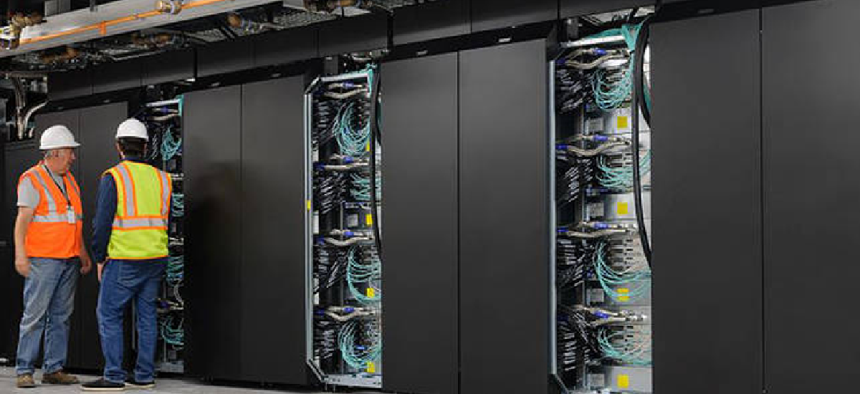NASA powers moon mission with modular, energy-efficient supercomputer


Connecting state and local government leaders
The Aitken supercomputer, located in NASA Ames’ new modular supercomputing facility, is designed to deliver advanced high-performance computing solutions with significantly less electricity and water use.
NASA’s Ames Research Center has a new custom-designed Hewlett Packard Enterprise supercomputer to support its ongoing missions and the next voyage to the Moon. The high-performance computer (HPC) will run entry, descent and landing modeling and simulations programs for the Artemis program, which aims to land humans in the lunar South Pole region by 2024.
Four years in the making, the Aitken supercomputer, named after astronomer Robert Grant Aitken, is based on the liquid-cooled HPE SGI 8600 system. It features 1,150 nodes, 46,080 cores and 221 TB of memory and is capable of running at 3.69 petaflops.
Aitken is located in NASA Ames’ new modular supercomputing facility, which is designed to deliver advanced HPC solutions with significantly less electricity and water. The system uses cooling technology that relies on evaporation and outside air from the temperate San Francisco Bay Area, replacing the need for a cooling tower and millions of gallons of water.
Aitken will be housed in a Schneider Electric SmartShelter, a shipping container that features prefabricated IT infrastructure packaged in a secure, weather-proof and fire-rated data module. The modular approach allows Ames to quickly construct additional modules as needed to meet new challenges. Aitken is housed in the first module of the facility, which has the potential to expand to 16 computing and data storage modules.
The new modular facility follows on the success of a 2016 prototype facility housing the Electra supercomputer. In 2018, the modular approach saved approximately 2 million kilowatt-hours of power and over 3 million gallons of water, NASA officials said. The cost savings allow NASA to purchase additional supercomputing capabilities to support more than 1,500 users across the U.S. who rely on NASA high-end computing to make new scientific discoveries and expand human knowledge.
The Defense Department's High Performance Computing Modernization Program also recently announced a modular HPC initiative. In June DOD said it would be using a portable IBM supercomputer housed in a shipping container for deployment to the tactical edge.





